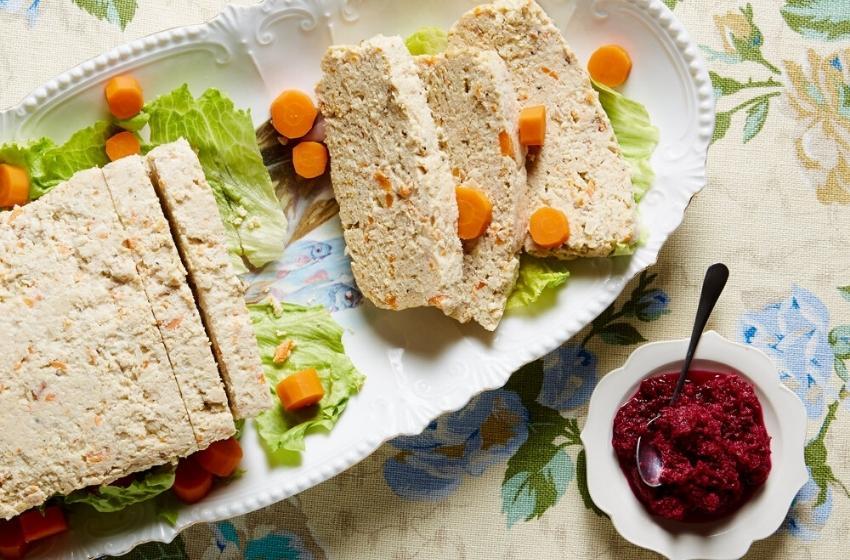The controversy about whether a stuffed fish should be sweet or spicy has not subsided for more than a century. Supporters of different traditions are divided according to the territorial principle "gefilte fish line".
Photo by Penny De Los Santos
The first mention of gefuelten hechden (stuffed pike) comes from a 700-year-old, non-Jewish, German cookbook in which poached and mashed fish was flavoured with herbs and seeds, stuffed back into the skin and roasted. It was a popular dish for Catholics during Lent, when eating meat was forbidden.
The Torah forbids Jews to work on Saturday. However, according to ancient tradition, there should be “big fish†on the table on this day, among other dishes. It would seem, what is the contradiction? But cleaning the fish is work, and picking bones out of it while eating is also. The solution turned out to be ingenious, and it has been used for many years in different countries, without thinking about the religious roots of the recipe. The fish can be pre-cooked and served cold while maintaining its appearance but freeing the bones.
In Yiddish gefilte means “stuffed†- minced fish is put into its skin, sewn up and baked. Fish has always been a relatively expensive food item. However, by mixing pike fillets with cheap ingredients - bread, onions and eggs - you can feed a large family with one medium-sized fish or provide yourself with food for several days. In addition, you do not need to choose bones from stuffed fish, which allows you to observe the rules of Shabbat.
Pike is considered one of the main fish for this dish since the Middle Ages. The earliest recipe for stuffed pike is found in Germany - the manuscript dates from around 1350. In the same place, in Germany, in a lake near modern Kaiserslautern, the famous pike swam, which in 1230 Emperor Frederick II seemed to have marked with a special ring. According to legend, it was 140 kilograms and about 6 meters long - caught 267 years later. The pike grows faster than other fish - in three years, it gains about two kilograms of weight. But the main thing is that it is caught all year round. This has made it an irreplaceable food product for many centuries, especially in winter (and especially on Saturdays).

Carp dishes are especially popular in Poland. In the 17th century, pike on the Jewish table was replaced by carp brought from the east of Europe. Here they began to cook carp according to "pike" recipes and also invented their variations. Over time, any dish based on minced fish became gefilte fish, even fish cakes. Now recipes that prescribe to cook fish in portions or in the form of meatballs for two - two and a half hours over low heat are considered classic. With prolonged heat treatment, fish bones soften, which means that you may not pick them so carefully when making minced fish.
The main difference between the Western European and the American tradition is the sweet taste of gefilte fish. Whether this was due to the influence of Hasidism, which originated in Poland in the 18th century (Hasidim, as a rule, sweeten food, associating sugar with the joy of a religious holiday), or with the abundance of sugar factories owned by Jews, it is not known for sure. One way or another, by the middle of the 19th century, Polish Jews were preparing stuffed fish with sugar. Their closest neighbors in Lithuania, Latvia, and Ukraine, stuffed fish was heavily seasoned with pepper and served with horseradish. Thus, Europe was divided by a conditional border - the gefilte fish line ran from north to south, about 40 kilometers east of Warsaw. To the west of it, the stuffed fish was cooked sweetened, to the east - peppered. However, the recipe for any area has its characteristics. And disputes - whether to remove the skin with a "stocking" or "vest", bake fish or cook, cook it whole or in pieces, with or without vegetables, with lemon or tomato juice - are still going on.
In Odessa, Gefilte fish is traditionally prepared from pike perch, carp, and pike. You can try Gefilte fish in any restaurant serving Odessa cuisine.





















